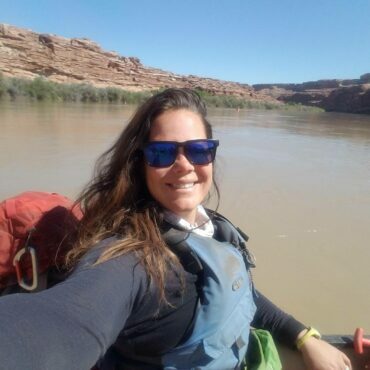

Nature Based Therapy
By Laura Marques Brown | September 6, 2019
“You Should Sit in Nature for 20 Minutes a Day…Unless You’re Busy. Then You Should Sit For An Hour.” –Zen Saying
In many Indigenous and Native cultures across North America, there was never a word for “Wilderness”. To be Indigenous was, and still is, to be in communion with nature as part of daily life, as part of family and as part of the self. *In fact, the term “Wilderness” comes from a white framework that is intent on separating the human with the landscape.
One of the most profound impacts of the political and philosophical concept of “Wilderness” was how it othered wild landscapes and the people who stewarded them for centuries. And as a result, many of us either escape to, romanticize or reject nature all together.
This is why I am passionate about reuniting human beings with the natural world in conscious and liberating ways.
I have seen clients explore their family systems with plants and flowers. I have witnessed people suffering from addictions experience powerful breakthroughs with a horse as their guide. And I have been honored to watch people grow their tolerance for safe connection, by spending time outside alone, with nothing but a journal and the wind. As a clinician I have seen that both people and nature are in need of healing, and this process does not need to be romanticized. It can be quite simple actually, but it does take courage.
We can climb mountains or canoe rivers and become swallowed whole by the vastness of the natural world. We can drop into canyon country and be reminded of the dark zones of the world, where the stars illuminate your path brighter than man-made light ever could. But few people have the privilege to escape their lives and daily responsibilities in this way.
So, my passion as a Nature-based Therapist today is to bring nature inside. To truly meet my clients where they are, which is often busy, hungry, tired, and doing their best. At Anchored Hope Therapy, I invite my clients to explore themselves with the support of natural objects indoors. Nature based objects support self-regulation and grounding skills, and can offer perspective and space when we need it most. Sometimes we sit underneath trees, or lay on the grass outside. And in the future, I do hope to offer nature-based intensives and workshops for interested clients. But when we simplify the process and reconnect in small ways, we actually heal from the larger tragedy- the original separation of human from land.
We can all give ourselves permission to take off our shoes and touch the earth with our toes. We can all learn to pause, learn to play again. We can notice the resilient natural world around us, or the unexpected beauty in a flower or weed. We can pause long enough to hear the unique song of a nearby bird, or notice the steady shift of seasons and how they support us. And when we acknowledge the natural world around us in this way, we actually acknowledge parts of our neglected selves that are thirsty and in need of nourishment.
*As defined in the Wilderness Act, signed into law in 1964 by President Lyndon B. Johnson:“A wilderness, in contrast with those areas where man and his own works dominate the landscape, is hereby recognized as an area where the earth and its community of life are untrammeled by man, where man himself is a visitor who does not remain.”


